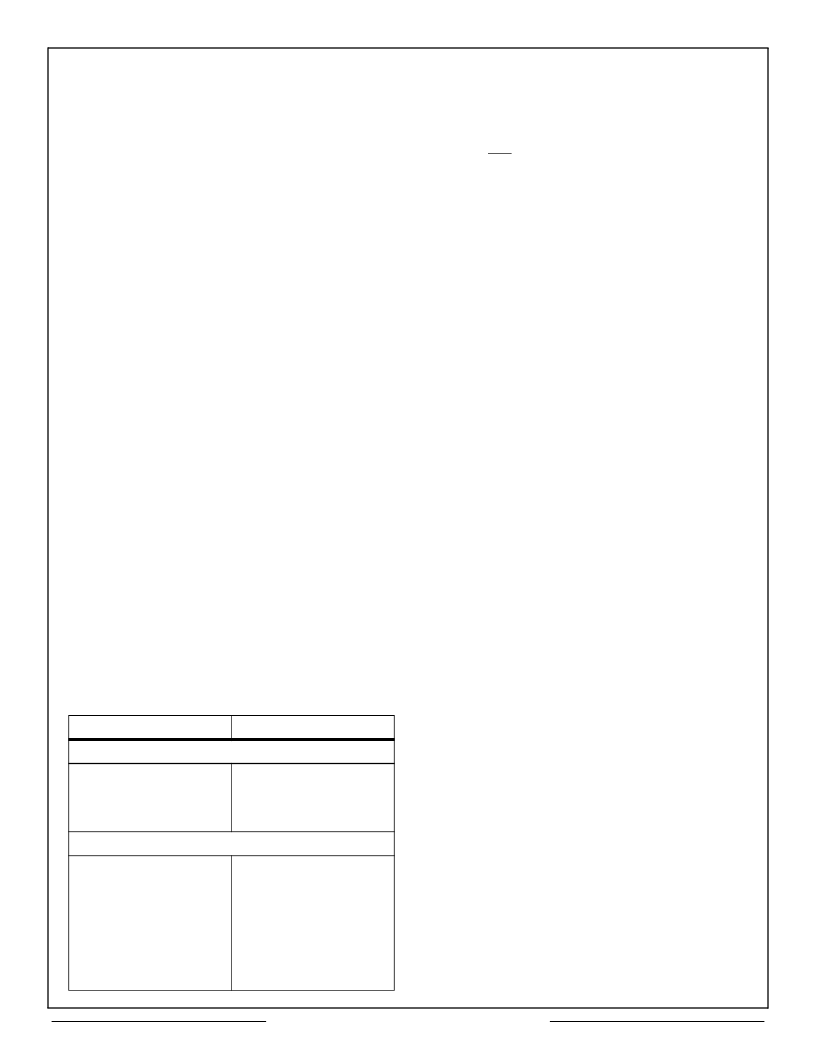- 您現(xiàn)在的位置:買賣IC網(wǎng) > PDF目錄369674 > CT2556 (Aeroflex Inc.) CT2553 / 2554 / 2555 / 2556 Advanced Integrated MUX (AIM) Hybrid FOR MIL-STD-1553 PDF資料下載
參數(shù)資料
| 型號: | CT2556 |
| 廠商: | Aeroflex Inc. |
| 英文描述: | CT2553 / 2554 / 2555 / 2556 Advanced Integrated MUX (AIM) Hybrid FOR MIL-STD-1553 |
| 中文描述: | CT2553 / 2554 /二千五百五十六分之二千五百五十五高級集成復(fù)用器(AIM)的混合的MIL - STD - 1553的 |
| 文件頁數(shù): | 13/36頁 |
| 文件大?。?/td> | 352K |
| 代理商: | CT2556 |
第1頁第2頁第3頁第4頁第5頁第6頁第7頁第8頁第9頁第10頁第11頁第12頁當前第13頁第14頁第15頁第16頁第17頁第18頁第19頁第20頁第21頁第22頁第23頁第24頁第25頁第26頁第27頁第28頁第29頁第30頁第31頁第32頁第33頁第34頁第35頁第36頁

Aeroflex Circuit Technology
13
SCDCT2553 REV B 8/6/99 Plainview NY (516) 694-6700
BC OPERATION
Initialization of the CT2553 via a Reset or by
setting the appropriate Configuration Register bits
will result in placing the CT2553 in the BC
operating mode.
BC MEMORY CONFIGURATION
. The user
configures the memory by: (1) writing the start
address of the Descriptor Stack into the Current
Area Stack Point location; (2) loading the fourth
word of each Descriptor Stack Entry (DSE) with
the start location of each message block; and (3)
loading the Message Counter with the total
number of messages to be transmitted. Note that
the Message Count must be written in 1's
compliment. For example, to transmit one
message, load OOFE(H) (See Table 3, BC
Memory Map).
If both map areas A and B are utilized, this
procedure must be performed for each area. Note
that the Stack Pointer and Message Counter
locations are fixed; Message Block locations are
user-defined.
Each message block must be proceeded by a BC
Control Word (See Figure 14). This word informs
the CT2553 as to the format of the message
transfer. Bit 1 of the Control Word defines whether
the following message to RT 31 is to be issued in
Broadcast Mode or whether RT 31 is a unique
terminal. Memory locations must be reserved at
the end of each message for: (1) a Loop Back
Word; (2) RTU Status Word(s); and (3) received
Data words. See Figure 16, BC Message
Formats.
Message blocks may be loaded anywhere in the
non-fixed area of the shared RAM. However, each
data block may not cross a 256 word boundary
(i.e., bit 8 of the starting address of the message
block must match bit 8 of the address of the last
word of the message block).
Table 3 - Typical BC Memory Map
ADDITIONAL FEATURES
. The Configuration
Register – STOP ON ERROR bit can be set. This
causes the CT2553 to halt operation at the end of
the current message transfer if an error is
detected. In addition, setting the Interrupt Mask
Register bits will result in a low pulse on the
Interrupt (INT) pin with each occurrence of the
respective error, end of message or end of
message frame condition (See Configuration
Register and Interrupt Register sections).
BC TRANSFER-START SEQUENCE
After setting the CONTROLLER START bit in the
following actions:
1. Reads the Current Area Stack Pointer for the
address of the Descriptor Stack Entry (DSE).
2. Stores an SOM (Start of Message) flag in the
Block Status word to indicate a transfer
operation in progress.
3. Writes the Time Tag value into the Descriptor
Stack (See Time Tag).
4. Reads the Data Block Address from the fourth
location of the DSE.
5. Starts the MIL-STD-1553 message transfer.
Upon completion of the MIL-STD-1553 message
transfer, the CT2553:
1. Generates an End Of Message (EOM) or Error
(if applicable) interrupt if enabled.
2. Reads the Stack Pointer for the address of the
DSE.
3. Updates the Block Status Word; resets SOM,
sets EOM, and sets any applicable Error bits.
4. Writes the Time Tag value into the Descriptor
Stack (See Time Tag).
5. Increment Pointers: Stack Pointer incremented
by 4 and Message Count incremented by 1.
6. If more messages remain to be sent, a BC End
Of Message (BCEOM) interrupt occurs (if
enabled).
If an error occurs and Stop On Error has been
enabled, the CT2553 stops initiating BC
Transfer-Start sequences. The Stack Pointer will
point to the next message to be transferred (See
Figure 17).
HEX ADDRESS
FUNCTION
Fixed Areas
0100
0101
0104
0105
Stack Pointer A
Message Count A
Stack Pointer B
Message Count B
User Defined Areas
0108-013F
0140-017F
0180-01BF
01C0-01FF
0F00-0FFF
0000-00FF
Not Used
Data Block 1
Data Block 2
Data Block 3
Descriptor Stack A
Descriptor Stack B
相關(guān)PDF資料 |
PDF描述 |
|---|---|
| CT2561 | CT2561 Bus Controller, Remote Terminal and BUS Monitor FOR MIL-STD-1553B |
| CT2561-FP | CT2561 Bus Controller, Remote Terminal and BUS Monitor FOR MIL-STD-1553B |
| CT2565-001-1 | CT2565 Bus Controller, Remote Terminal and BUS Monitor FOR MIL-STD-1553B |
| CT2565 | CT2565 Bus Controller, Remote Terminal and BUS Monitor FOR MIL-STD-1553B |
| CT2565-001-2 | CT2565 Bus Controller, Remote Terminal and BUS Monitor FOR MIL-STD-1553B |
相關(guān)代理商/技術(shù)參數(shù) |
參數(shù)描述 |
|---|---|
| CT2556-FP | 制造商:AEROFLEX 制造商全稱:AEROFLEX 功能描述:CT2553 / 2554 / 2555 / 2556 Advanced Integrated MUX (AIM) Hybrid FOR MIL-STD-1553 |
| CT2561 | 制造商:AEROFLEX 制造商全稱:AEROFLEX 功能描述:CT2561 Bus Controller, Remote Terminal and BUS Monitor FOR MIL-STD-1553B |
| CT2561-FP | 制造商:AEROFLEX 制造商全稱:AEROFLEX 功能描述:CT2561 Bus Controller, Remote Terminal and BUS Monitor FOR MIL-STD-1553B |
| CT2565 | 制造商:AEROFLEX 制造商全稱:AEROFLEX 功能描述:CT2565 Bus Controller, Remote Terminal and BUS Monitor FOR MIL-STD-1553B |
| CT2565-001-1 | 制造商:AEROFLEX 制造商全稱:AEROFLEX 功能描述:CT2565 Bus Controller, Remote Terminal and BUS Monitor FOR MIL-STD-1553B |
發(fā)布緊急采購,3分鐘左右您將得到回復(fù)。